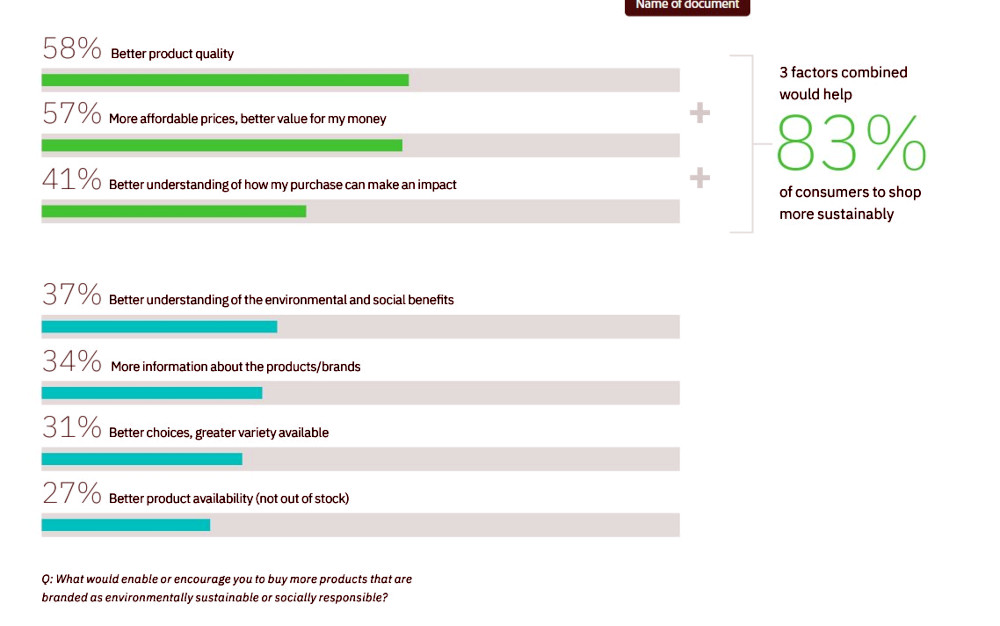You might think of the marketing department as advertisers. Or salespeople,
capturing the attention of customers with branding and snazzy videos. Or maybe
as analysts, monitoring data and adjusting their content to appeal to their
target market. But the role of marketers is expanding fast. Selling stuff to
customers
is no longer the sole focus. Consumers, retailers and employees are all looking
for brands that conduct themselves with a higher sense of social and
environmental responsibility; so, today’s sustainable marketer must don many
hats to satisfy internal and external stakeholders — turning their storytelling
superpowers
to influence behaviour
and drive positive change.
Marketer as Corporate Sustainability Officer
The gap between sustainability and marketing is closing as brands rush to
position themselves as 'green' – driven by customers increasingly aware of
environmental risk. 'Green' sells, but the sustainable marketer needs to steer
clear of accidental
greenwashing
as authorities clamp down on ambiguous communication and targets. At COP26,
governments agreed to create a new UN greenwashing
watchdog
to name and shame companies that swerve their sustainability promises. And in
the UK, the Advertising Standards
Authority
recently issued stricter guidelines regarding unqualified claims such as
'eco-friendly' or 'plastic-free.' Marketing buzzwords will no longer be
tolerated without substantiation, and ignoring these guidelines could cost a
brand both reputation and profit — up to €100,000 in France, where brands
are fined for using misleading terminology such as 'carbon neutral' without
reporting corroborating GHG emissions. Sustainable marketers need to understand
the technical truths behind their
products
so they can communicate authentically and build trust.
Marketer as behavioural psychologist
The average customer spends only 6 seconds deciding what to buy at the shelf. By
this point, however, the skilled marketer has directed them through the sales
funnel, so the decision is already partially made. Only a last-minute discount
or free gift might trigger a change of heart. All sustainability initiatives
will require a significant element of behavioural change, and the marketer can
use their understanding of motivation to shape that circular journey. For
example, Willemijn Peeters of
circular plastics consultancy Searious
Business thinks the marketer will be crucial
to the uptake and success of reusable
packaging.
"We see from our clients that the main barriers to reuse are cost-effectiveness
and behavioural change. No scheme will succeed without high uptake and return
rates. We need to sift through the complex messaging behind reuse and distil it
into simple prompts that customers can absorb — marketers know how to do this."
Marketer as packaging designer
The Ellen Macarthur
Foundation
states that a circular economy begins with thoughtful design. Products and their
packaging need to be designed with the impact of their entire lifecycle in mind.
Packaging designers are under tremendous pressure to eliminate waste, choose
low-impact materials and increase recyclability while still prioritising
functionality. These measures often leave little room for shelf appeal — the
final battleground for the marketer. Most marketers are incentivised to sell by
volume; they need their packaging to catch the eye, imply quality and add value
to the product within. What happens to it after use is often a secondary
consideration, and their influence can make or break a sustainable innovation
before its leaves the drawing board. According to recent IBM’s
research,
41 percent of consumers would shop more sustainably if they understood more
about the environmental and social impact. Product packaging is the last
opportunity to speak to your customer and leave a positive impression of your
brand. Make sure your final words are transparent and honest. Make sure they are
ones that attract and continue to engage sustainability-focused consumers.
 Image credit: IBM
Image credit: IBM
Marketer as brand leader
As sustainability becomes an inherent part of our global economy, marketers must
take on a leadership role in creating and communicating their brands' purposeful
identity — building trust with their customers, suppliers, investors and
employees. According to a survey by
the UN Global Compact and Accenture, 81 percent of consumers now want
businesses to take a stand on important social and environmental issues.
However, the customer is not the only stakeholder looking for this commitment;
both retailers and suppliers are getting choosier over what brands they stock or
sell to. They want to be associated with brands that share their principles and
help them meet their environmental and social goals. A recent
study from digital
studio PLAY found that two-thirds of Gen Z employees felt it was important
for the company they work for to be committed to acting
sustainably.
In a pressurised job market, attracting and retaining employees is critical —
meaning, brand image is as essential to HR as it is to sales.
Marketing in the future will become inextricable from sustainability. Marketers
must collaborate with other departments closely, gather accurate knowledge and
work out how to share this in a humble and credible way. The number of hats on
the marketer's hat rack is increasing, but the most important is still the
thinking cap.
Get the latest insights, trends, and innovations to help position yourself at the forefront of sustainable business leadership—delivered straight to your inbox.
Published Feb 22, 2023 1pm EST / 10am PST / 6pm GMT / 7pm CET